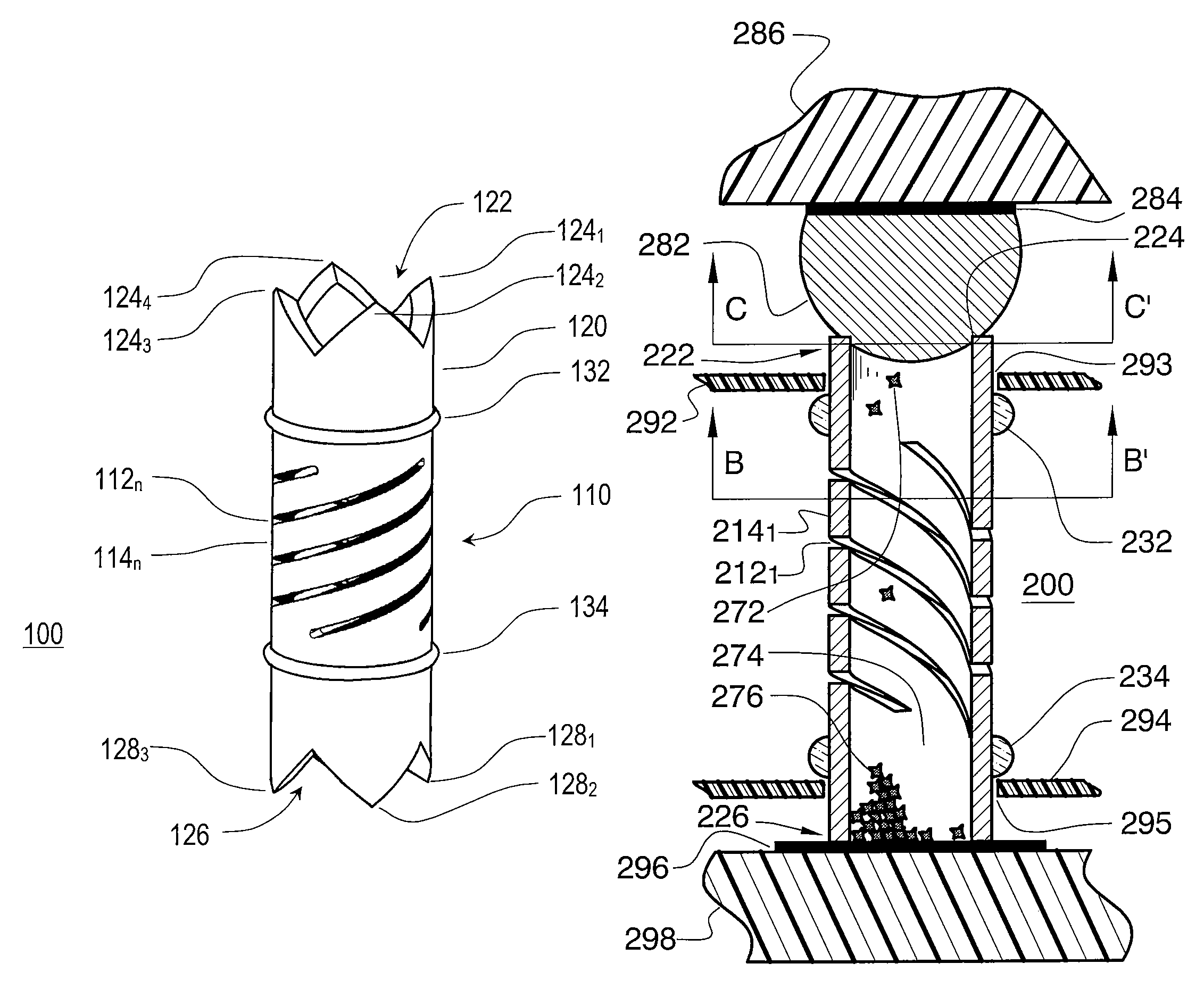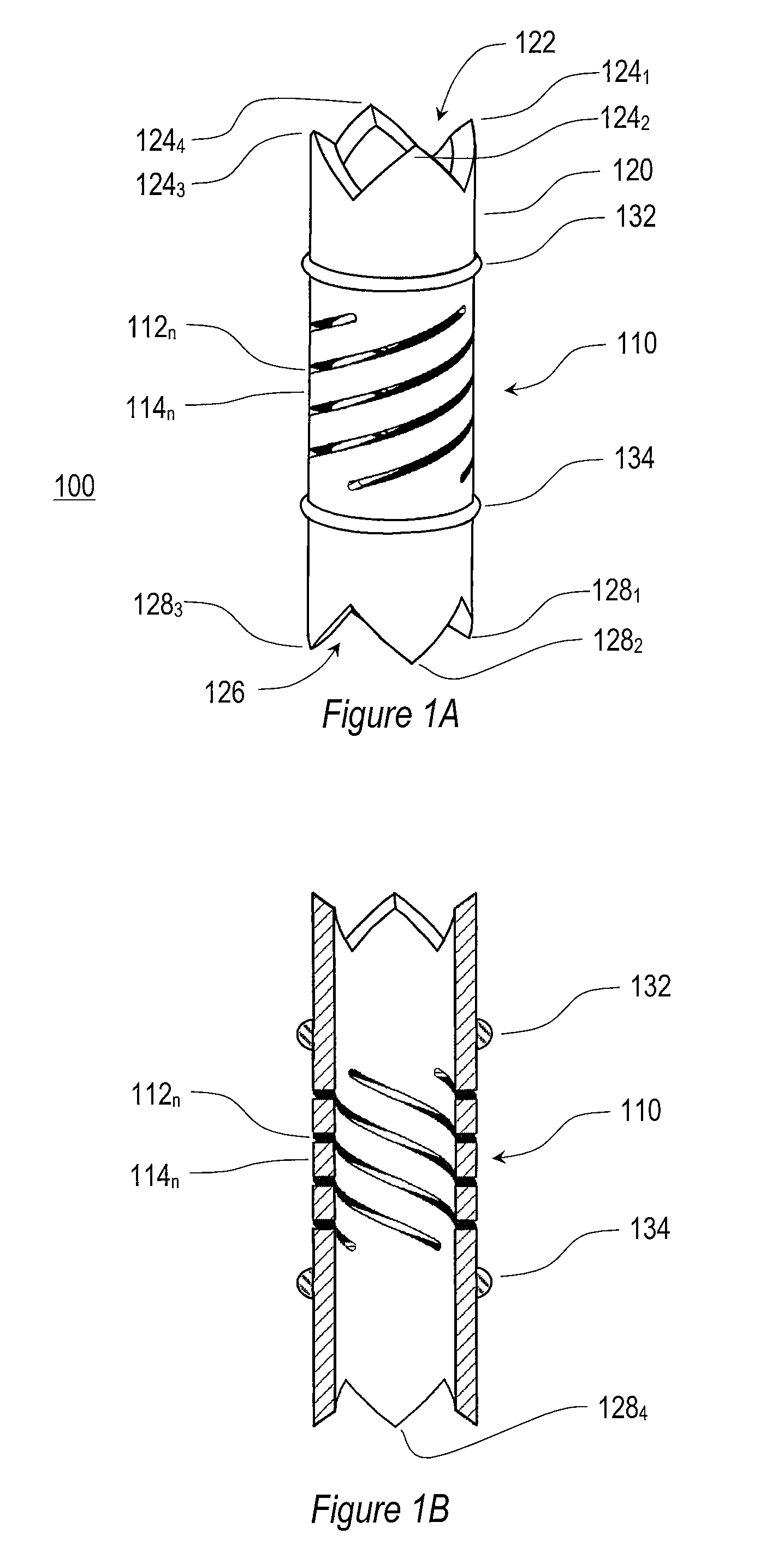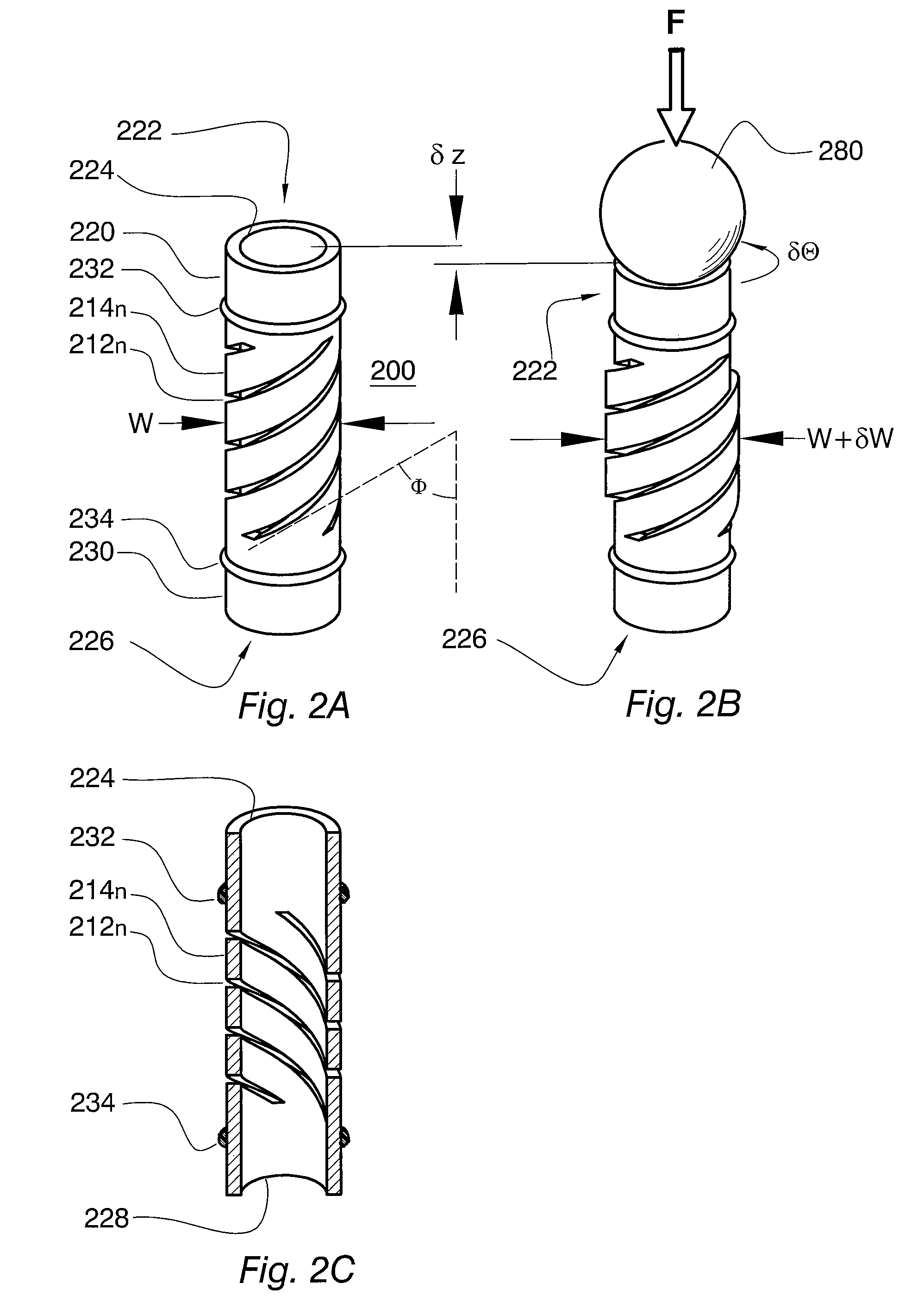Self-cleaning socket for microelectronic devices
a microelectronic device and socket technology, applied in the direction of coupling contact members, coupling device connections, instruments, etc., can solve the problems of unreliable contact between the contactor tip and the mating solder ball, economic loss, and tip fouling, etc., to achieve the effect of increasing manufacturing ease and extreme miniaturization
- Summary
- Abstract
- Description
- Claims
- Application Information
AI Technical Summary
Benefits of technology
Problems solved by technology
Method used
Image
Examples
Embodiment Construction
[0027]As illustrated by an embodiment shown in FIGS. 1A and 1B, contactor 100 comprises a hollow cylindrical electrically conductive metal tube which is cut through by a series of helical slots 112n in a midsection 110 to form resilient helical legs 114n that terminate in a collar 120 at the frontal end of contactor 100. In this embodiment, there are four equally-spaced legs 114n (FIG. 1A). (Labels are omitted from all but one of the legs 114n and slots 112n for clarity of exposition.) Two or more legs 114n are needed to support collar 120 horizontally and to prevent tipping of the collar when a terminal (not shown) is urged against collar 120. Legs 114n are held in place by the cylindrical collar region 120 in the uncut end portion, herein called the collar 120 of contactor 100. Annular flanges or retaining rings 132 and 134 may be provided around the circumference of contactor 100 to facilitate mounting of the contactor in a socket assembly employing for example retaining sheets (...
PUM
 Login to View More
Login to View More Abstract
Description
Claims
Application Information
 Login to View More
Login to View More - R&D
- Intellectual Property
- Life Sciences
- Materials
- Tech Scout
- Unparalleled Data Quality
- Higher Quality Content
- 60% Fewer Hallucinations
Browse by: Latest US Patents, China's latest patents, Technical Efficacy Thesaurus, Application Domain, Technology Topic, Popular Technical Reports.
© 2025 PatSnap. All rights reserved.Legal|Privacy policy|Modern Slavery Act Transparency Statement|Sitemap|About US| Contact US: help@patsnap.com



